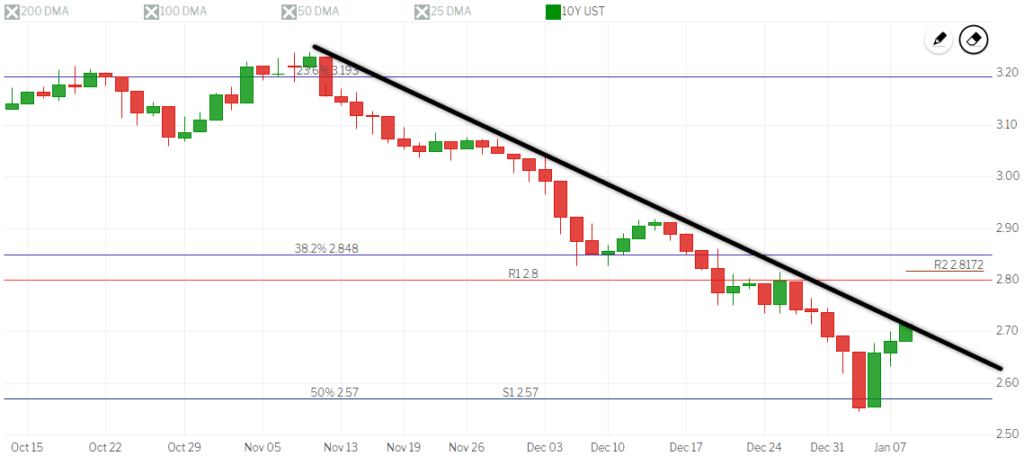In 1930 two men spent $70,000 to buy 365 acres from Fruitland Nurseries Inc. with the vision of building a new golf course. They hired an architect from Scotland by the name of Alistair MacKenize and by 1933 the course was ready for play.
Fast forward to today and Augusta National Golf Club is one of the most exclusive golf courses in the world. Starting on Thursday it will play host, as it does each April, to the Masters Tournament and the champion golfer will don the signature green jacket on Sunday afternoon.
Mortgage Rates
Home loan rates are holding steady from last week. Similarly the yield on the US 10-year treasury note has been almost flat at ~2.5% since the beginning of April.
Jobs Report
Last Friday the Bureau of Labor Statistics released the monthly employment report. It showed that 196,000 jobs were created during March and the unemployment rate held steady at 3.8%.
For the financial markets the results were “Goldilocks” in that they were not too hot, which could have pressured rates higher, and not too cold which may have stoked fears of an economic slowdown.
Brexit
With the original Brexit date of March 29th come and gone EU leaders are meeting on Wednesday to decide if an extension will be granted. Without an extension Britain will leave the EU on Friday without a trade deal. Most analysts think an extension will be granted but for how long is not known.
Uncertainty from the Brexit proceedings have helped US interest rates remain low. Any signals for a quick and orderly exist could pressure rates higher.
The Week Ahead
This week’s economic calendar heats up on Wednesday when the Consumer Price Index and minutes from the last Federal Reserve meeting are released. Recently mortgage rates have not reacted well to Fed meeting minutes. Speaking of the Fed, Chairman Powell is schedule to give three speeches this week. His comments can always influence the markets.
Current Outlook: floating
